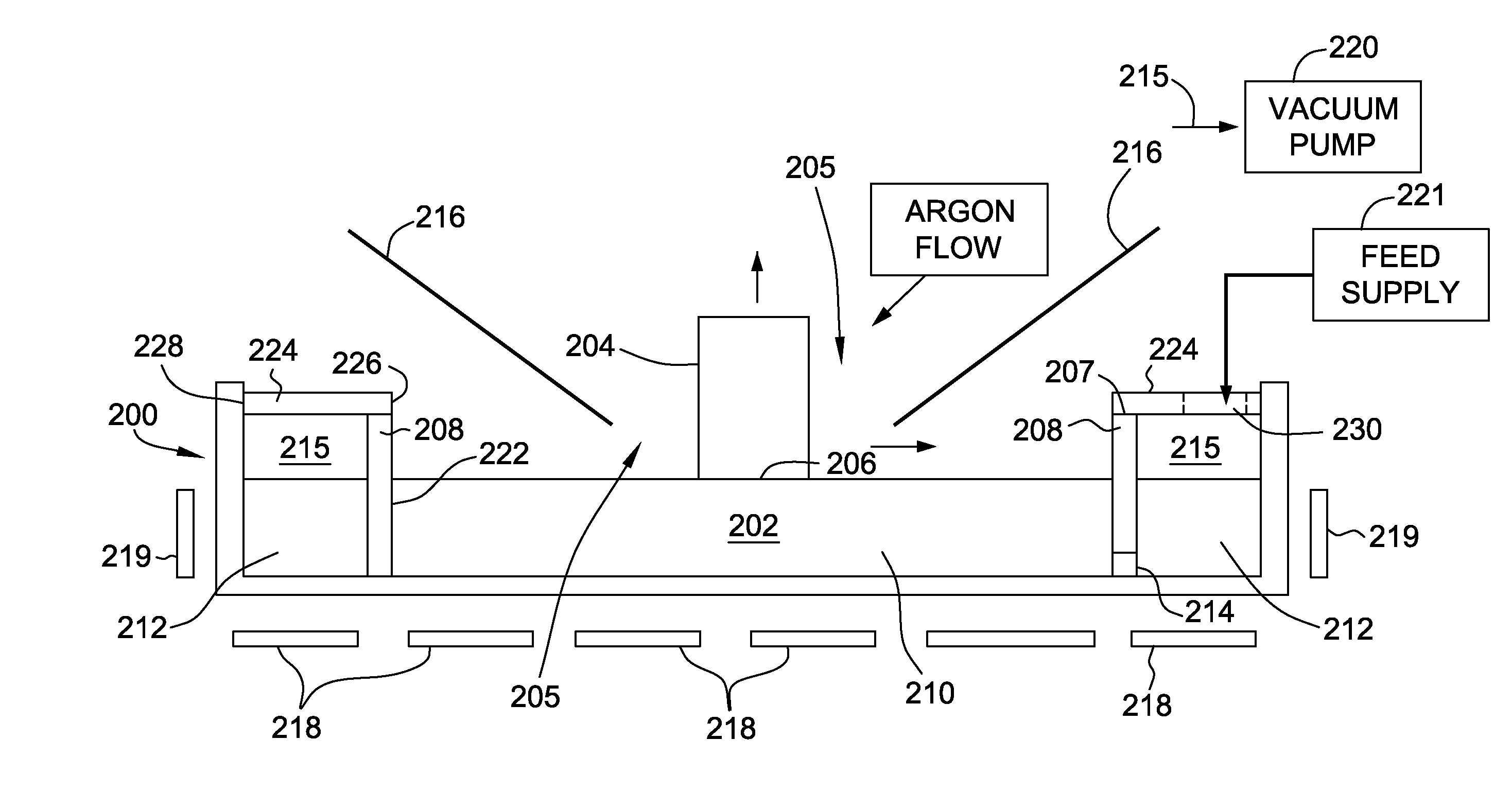Heat Shield For Improved Continuous Czochralski Process
a technology of czochralski process and heat shield, which is applied in the direction of single crystal growth, polycrystalline material growth, eutectic material solidification, etc., can solve the problems of loss of single silicon structure, serious maintenance problem, dislocation defects
- Summary
- Abstract
- Description
- Claims
- Application Information
AI Technical Summary
Benefits of technology
Problems solved by technology
Method used
Image
Examples
Embodiment Construction
[0016]FIG. 2 shows a schematic diagram of an exemplary embodiment of an apparatus for growing ingots by the Czochralski method. In this embodiment, a weir 208 is provided in a crucible 200 that holds a silicon melt 202. The weir 208 has generally a cylindrical shape with sidewalls 222 supported at the bottom of the crucible that extend upwardly to define the growth region 210 in silicon melt 202. The weir 208 divides the melt into two portions, an inner growth region 210 and an outer, feed supplement region 212. That is, the cylindrical weir separates the growth region 210 from a first region or melt supplement region 212 to substantially isolate and prevent thermal and mechanical perturbations from affecting the growing crystal in the growth region 210. The weir 208 also defines a passageway 214 for providing a controlled melt flow between the melt supplement region 212 and growth region 210. A feed supply 221 supplies a source of solid silicon feedstock, such as chunk or granular ...
PUM
| Property | Measurement | Unit |
|---|---|---|
| melting temperature | aaaaa | aaaaa |
| cylindrical shape | aaaaa | aaaaa |
| semiconductor | aaaaa | aaaaa |
Abstract
Description
Claims
Application Information
 Login to View More
Login to View More - R&D
- Intellectual Property
- Life Sciences
- Materials
- Tech Scout
- Unparalleled Data Quality
- Higher Quality Content
- 60% Fewer Hallucinations
Browse by: Latest US Patents, China's latest patents, Technical Efficacy Thesaurus, Application Domain, Technology Topic, Popular Technical Reports.
© 2025 PatSnap. All rights reserved.Legal|Privacy policy|Modern Slavery Act Transparency Statement|Sitemap|About US| Contact US: help@patsnap.com



